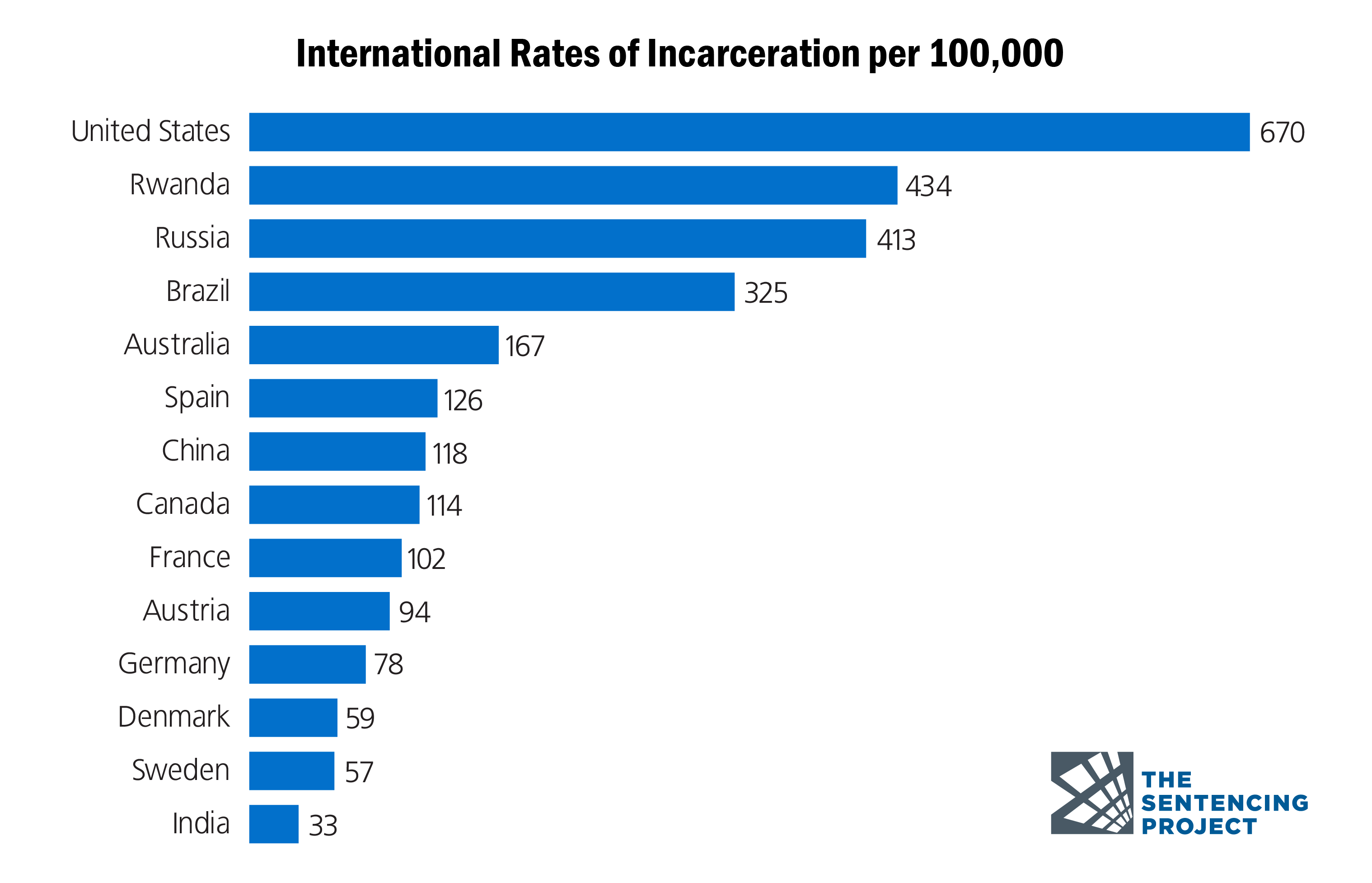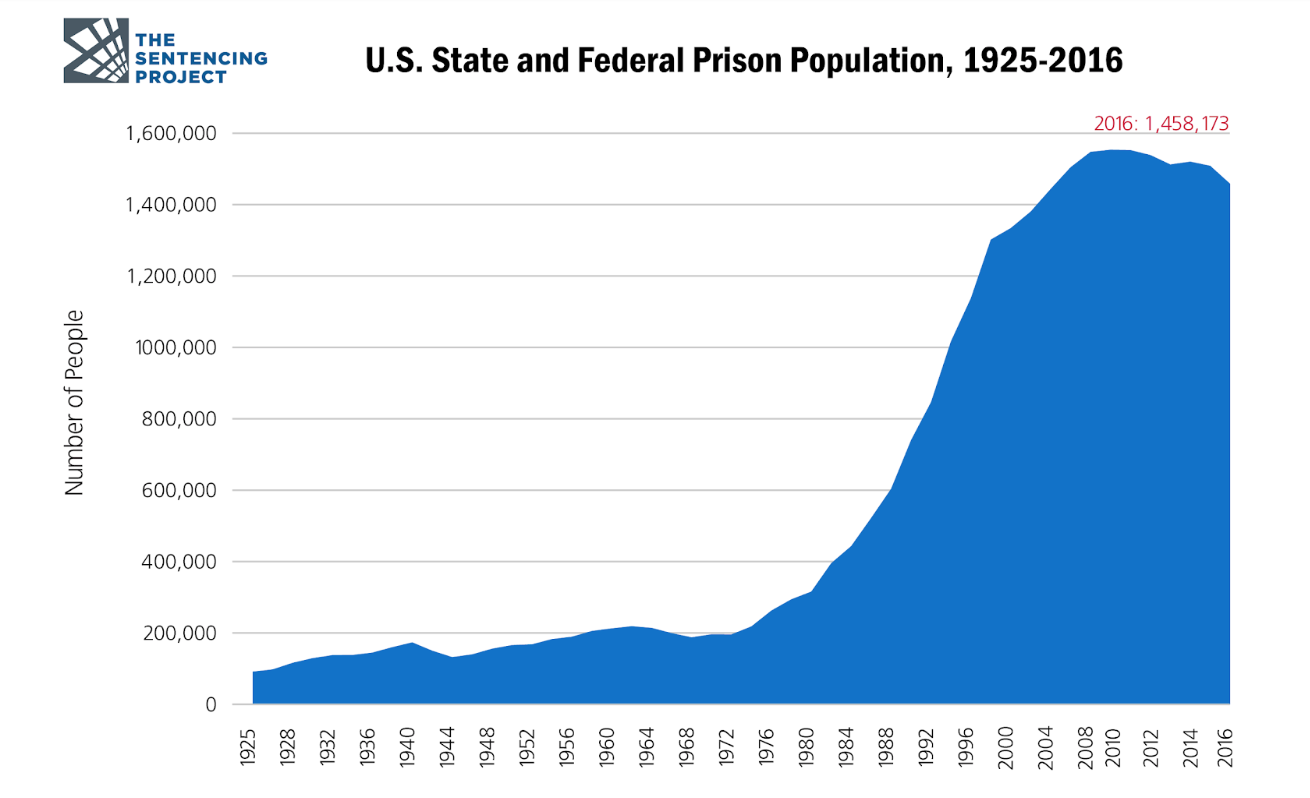David Carter
The section on punishment started with a discussion about feeling safe and secure in our homes. Feeling safe and secure in person and home is arguably one of the most discussed feelings in our nation today. Our fear of crime influences how we think and act day to day. This has caused great fluctuation in the United States, in regards to how we punish people who are convicted of violating the law. In part, punishment comes from the will of the people, which is then carried out by the legislative process, and converted into sentencing practices. However, has our desire to feel safe and secure been taken too far by policy? And, have these policies created even bigger problems for us as citizens? This final section on corrections attempts to answer how we as America are doing, in order to solve our crisis in corrections.
To give an idea about America’s use of prisons, here is a comparison of the United States to other countries around the world. As one can see, America uses punishment fairly well. In fact, one could argue that we are the best at it.
International Imprisonment Rates

The United States wasn’t always this punitive. As we have discussed, the context of eras that we have moved through, our underlying philosophy of punishment constantly evolves, even if it is rather slow at times. Unfortunately, in the 1970s, there was a confluence of events that kicked us off on a path of incarcerating many types of individuals, more so than we had done in the past. This path of imprisonment or mass incarceration has had lasting effects. Below, you can see when the expansion of the correctional system began.
Mass Increase in Incarceration

The United States had just gone through a large scale amount of civil unrest, which leads to a civil rights movement of many Americans. As a country, we were not happy with how subpopulations were being treated, and it was during this that many positive changes in the country were being adapted into law. This also corresponded with a massive influx of men that were returning from the Vietnam war. The disapproval of the war, increased our growing distrust of the government to provide programs that could help individuals within the justice system. Many State-funded operations were seen as intrusive on the public, to include mental health facilities. There was also a large scale importation of drugs occurring in America. All of these items and more shifted our ideology rather abruptly in the United States, and we turned toward a more punitive approach to people in society that were getting into trouble. Collectively, we would consider this the “get tough era” on crime. This included the war on drugs (gang involvement), tougher sentencing legislation across the country, transinstitutionalization or transcarceration (the removal of many individuals from state mental health hospitals), and others. Collectively, these all had a large-scale increase in the prison population.
Full Jails?
It is 3:00 AM on a Sunday morning and Terry is getting force-released from jail because the jail is full. Force Releases occur when a facility is at its maximum capacity and a more serious offender is coming in. The decision has to be made in order to protect the community the facility is supposed to protect, but still, maintain the constitutional rights of the individuals it is required to secure. Like many others in the community, Terry made some poor decisions, was arrested for a lower level of crime and has started the process of going through the justice system. However, for Terry, and unfortunately many others, now Terry is being pushed back out onto the street, prior to receiving some basic services that may help him change his behaviors. This is not his fault, it is only due to the fact that a more dangerous offender is coming into the jail, and a decision had to be made.
To make matters more complicated, Terry is a dually diagnosed individual. This means that he has both a substance abuse problem and a low-level mental health issue. Terry has been managing his mental health issue with medications that he is able to afford because of his job at the local Wal-Mart. Now Terry will probably lose his job because he hasn’t shown up for two shifts, due to him being in jail. While not excusing any of Terry’s actions that got him in jail, Terry is now out on the street, without his medication. He is nervous that he is not sure what he is going to do.
This story is more common than you think. It happens to tens of thousands of individuals a year. What should the community do?

